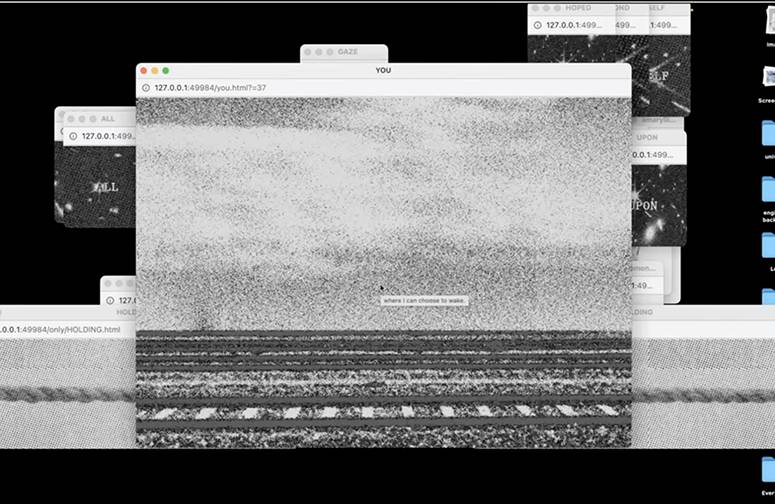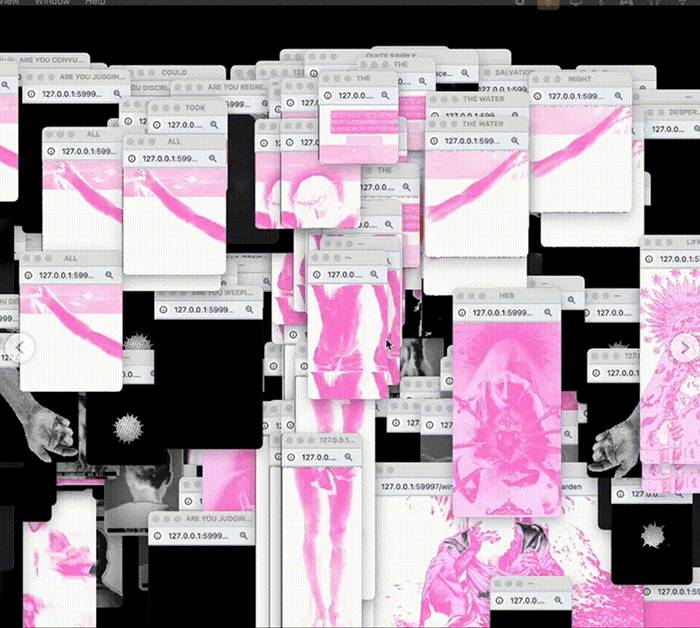Doomscrolling through the woods ft. Chia Amisola
Dreaming of ubiquitous computing (ubicomp) in 1991, computer scientist Mark Weiser imagined tech that would blend so seamlessly into life that using a computer would feel “as refreshing as taking a walk in the woods.” Now it’s 2025, and it seems that Weiser nailed it. Computers aren’t just screens anymore; they’re everywhere. Your fridge has Wi-Fi, entire cities are “smart,” and rivers are out here powering crypto mines. The entire spectrum of human social activity is now substrate for sleeker optimization. Every living soul now resides under a canopy of wifi signals.
But here’s the thing. If tech was supposed to feel like a nature walk, why does scrolling TikTok at 2 a.m. feel more like kicking dirt in a digital wasteland? Instead of Weiser’s idyllic stroll, what we got instead is the word doomscrolling. Somewhere along the way, what the 90s technologists envisioned as a “net-opia” (funnily enough, also the name of a now-defunct internet cafe) turned out to be a neurotic minefield.
So, what happened exactly? Decades before ubicomp, Muzak had the ambition to turn the world into one giant hotel lobby. Its brand of soft, mind-numbing background music wasn’t just about setting a vibe: it was “lowkey” a tool of control, guiding moods and behaviors without us even noticing. Ubicomp works the same way: tech has gotten so ambient that we barely register how deep it’s woven into our lives. Since technology no longer demanded the intensity of undivided attention, it is most effective when it is transparent, barely there.
By fading into the background, ubicomp’s social control protocols are further concealed and smoothed over. Jacques Attali spoke of Muzak as “a security system.. a distribution channel.. for the circulation of orders.” Perhaps this is where the feeling of doom comes from, after a long session of phone use: the subconscious knowledge that despite the apparent freedom in swiping through tons of content, your very interaction with technology breaks you apart, allowing it to access your innermost secrets and desires. Ambient tech, by being in the background, has penetrated the human soul way deeper than previous iterations of the computer have ever had.
Maybe the problem isn’t just tech: it’s how we relate to it. I’m reminded of artist Chia Amisola and her performance piece, My computer never asks me how many computers I had before (2024). In this work, Chia floods her computer screen with hundreds of windows and tabs, turning the desktop into a shifting landscape One moment it’s a desert of scattered text; the next, a glitchy sprawl of color. Chia becomes the mediatrix between body and machine, the computer session shimmying into apparition.
Over Zoom, Chia and I talked about how Catholicism seeps into their work, most evident in a recent work, Himala (2024).

“I think computation is at the heart of so many rituals. I find comfort in the computational act of reciting prayers and doing the Rosary at a set time.” They mentioned how tallying and counting can be seen not just in technology but in nature as well, and how religion can be a kind of technology in itself.
“The state I’m in when performing is the same state when I’m in prayer, ” Chia shares. Like Mary functioning as an interface between the faithful and the Divine, Chia transmutes seemingly mundane actions such as clicking and recitation into an LCD spiritual experience. What if tech could be more than just doom and data-mining? What if it could be something sacred?

Chia’s labor, they share, is revealing the invisible and making it as explicit as possible. To my eye, it’s about logging deeper, pushing the interface until it fractures into something human again. Only when something breaks do we actually see it for what it is. So, if we want to break free from tech’s hypnosis, maybe we have to break it first.
Maybe what we need isn’t less tech, but weirder ones, something that doesn’t just optimize, but disrupts, dreams, feels. Something to tell us that even in a world drowning in data, there’s still room for ghosts, for miracles, for something untamed.
Chia’s curated exhibition "Kakakompyuter Mo Yan" will be on show at the Art Fair Philippines Digital section from Feb. 21 to 23.



